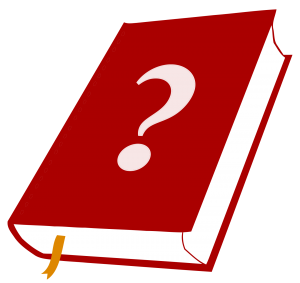(This post is the second in a two-part series. I adapted it from a keynote address I delivered in the summer of 2010 at Goddard College, in Plainfield, Vermont, where I teach in the MFA Writing program. The essay is part of a collection of talks by Goddard writing faculty that have been collected in Alchemy of the Word: Writers Talk About Writing. Part 1 appeared yesterday.)
Over the decades, Niels Bohr’s examples of complementary relationships became more and more philosophical: “In the great drama of existence we are ourselves both actors and spectators.” He found applications for the concept in “wider fields,” far beyond physics—psychology, biology, history, the arts. I don’t think he would have objected to applying it to the act of writing—to the relationship between the writer and that thing the writer has been working on.
Whatever you’re writing, and at every moment you’re writing it, you face a virtually infinite number of choices. You can choose among hundreds of thousands of words, you can put them in any order you wish, you can punctuate them senseless or sensible, you can break them up into chapters, stanzas, scenes, sections, lines, acts, paragraphs.
And there’s more. You have a universe of choices. But you have to draw the line somewhere.
What Bohr wrote about experiments applies to writing as well: “The concept of observation is in so far arbitrary as it depends upon which objects are included in the system to be observed.” The concept of the work-in-progress is arbitrary insofar as it depends upon which elements—words, punctuation, order, rhythm, and so on—you include in what you’re writing.
Arbitrary, but not random. The choice of where to draw the line is quite deliberate. “When we look at the moon through a telescope,” Bohr wrote, “we receive light from the sun reflected from the moon-surface, but the recoil from this reflection is far too small to have any effect on the velocity of a body as heavy as the moon.” You have to take into account the effects of a collision between photo and electron, but you can safely choose to exclude from your observations the aftershock of a collision between photon and moon. Or if, in Bohr’s example, you’re a person in a dark room using a stick to examine an object, you can safely choose to exclude the gravitational tug of a hydrogen atom 10 billion light-years away.
Somewhere between those two extremes you would draw the line. And where you draw the line defines the thing—the thing that is the relationship between you and what you seek to measure, in its totality.
“When anybody asks what a story is about, the only proper thing is to tell him to read the story,” Flannery O’Connor once wrote. “A story is something that can’t be said any other way, and it takes every word in the story to say what the meaning is.” I would have gone further, and she would have, too, I suspect. Every word affects the meaning, but so does every piece of punctuation, every paragraph break. With each of those choices the line you draw around the work-in-progress shifts. Each addition to or subtraction from the text—each interaction between you the writer and the thing you’re creating—alters what is within the perimeter and what is not, what is part of the work and what is not. It redefines the thing.
Like the notion of gravitational attraction across unfathomable distances, the idea that the tiniest edit affects the entirety of a work is not as abstract or as hypothetical as it might sound. A piece of writing lives and dies by how rigorously it adheres to its definition of itself—by how astutely the writer chooses what to place on either side of the line. The kind of work that Flannery O’Connor was referring to—the story that defies summation—would be one where you can’t understand the full meaning of a word or a comma without knowing its context: its adjoining words, its sentence, its paragraph, and so on, until you have a universe. Not the whole universe. But the universe of the story: the thing in the dark room that you the writer have defined by where you have chosen to draw the line.
The thing—this object that you have created, this written work—is not complete in itself. In the complementarity interpretation, the thing is both you, the writer, plus the thing you’re working on. Which raises a question: What do we even mean by “thing” if it is writer-plus-thing? What is this thing that is thing-plus? Words fail us—another favorite topic of Bohr’s.
So let’s do what Bohr did and concede that we’re stuck with the limitations of a language that evolved to describe a pre-quantum world. Let’s say the thing is what you might naïvely but understandably think is the thing: novel, poem, play, blog post. In that case, this other thing—the relationship between thing and writer: the totality of the experience: thing-plus—is what we might call, in language less abstract and hypothetical and “vague!” than it might at first seem, the spirit of the thing.
• • •
Book: Gray_book.png: gingercoons (derivative work: Marek M); A Good Man Is Hard to Find (book)/”A Good Man Is Hard to Find” (story): amazon.com.




When i’ve taught arithmetic, i’ve stressed that zero is more important than any of the other numbers. It’s way more than a place-holder. It’s the anchor for everything.
Nothing is better than complete happiness.
A ham sandwich is better than nothing.
Therefore, a ham sandwich is better than complete happiness.
This was an incredible ready. I do believe the universe in some way knew I needed to see this in raw algorithm form today, and I sincerely thank you!
Take Care,
Alexandra